French roses: description, varieties and their cultivation
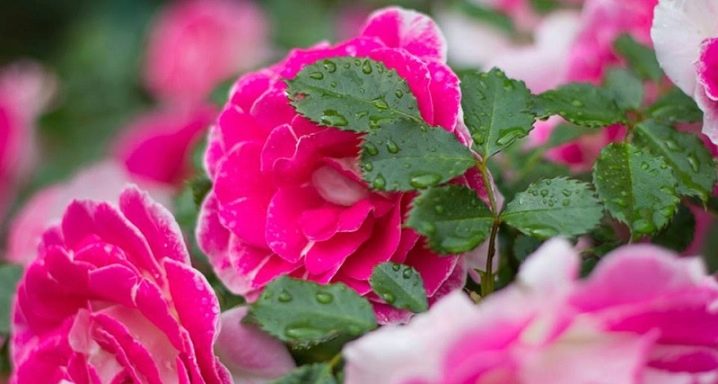
Rose is a collectively descriptive term that combines, under its meaning, names, species, plant varieties of the wild rose genus. Grown by humans, rarely grows in the wild, degenerates over time. Interestingly, 90% of the varieties of this plant were bred by breeding. The rose is known for its wide range of colors. The number of combinations of flowers and shades, as well as shapes and sizes, has thousands of items.
It lends itself well to selection. The famous master of grafting this plant was Jean-Baptiste André Guillot. Over time, the breeder's surname has become a household name for many varieties and varieties of roses. At the moment, the best gardens in France are decorated with the flowers of Jean-Baptiste. One of them, known since ancient times, is the French rose.
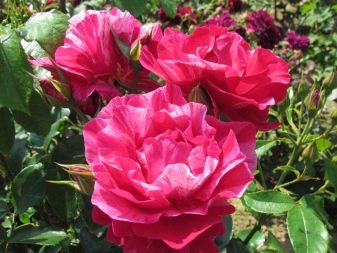
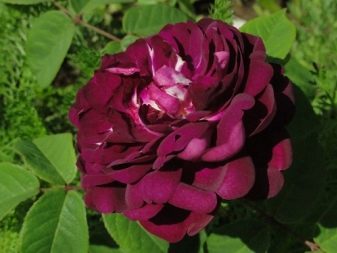
Characteristic
The French rose is a low-growing shrub whose trunks are covered with small thorns. Varieties exceeding 150 centimeters in size are rare. The flowering period lasts for one month a year. In most regions, it is June-July. Peony flower shapes: regular, double, semi-double.
The color composition of the French flower is expressed by a spectrum of purple or carmine red combinations. Over time, as a result of constant selection, the color spectrum expands. The smell is a characteristic pleasant scent of a rose. French roses are resistant to low temperatures, unpretentious and can grow in difficult climatic conditions. Almost any soil is suitable for their growth.
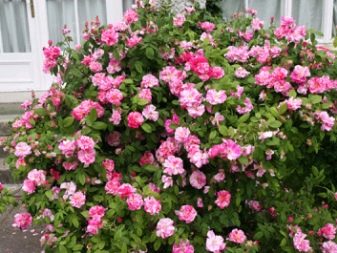

Varieties
There are quite a few varieties of French roses, consider the descriptions of the most popular.
- Cardinal ds Richelieu. The height of the bush trunk is up to 1 meter. Small flowers of lilac color, double configuration. Has racemose flower clusters. The size of the flowers and the height are allowed for planting this variety in pots. Pleasant, pronounced aroma.
- Gallica Complicata. Ancient, but rare variety, which exceeds the height of the trunk 2 meters. The increased length of the stems and their poor resistance to fracture require the installation of additional supports, especially during the flowering period. The flowers are large - up to 10 cm in diameter, have a peony flat shape and a white-pink color. The aroma is mild, but pleasant.
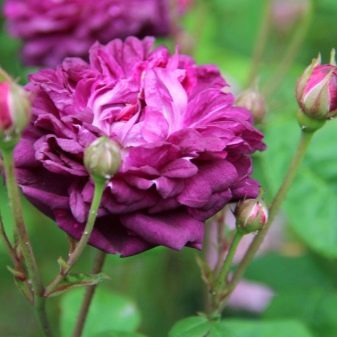
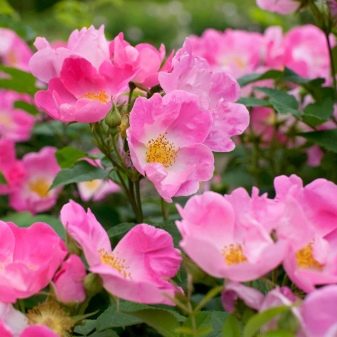
- "Gallic Medicinal" (Gallica Officinalis). The plant variety is widely known in France and abroad. It has undersized stems topped with cluster-like clusters of flowers. Looks perfect in small garden areas. The flowers are round, semi-double, scarlet. The characteristic smell is pronounced.
- Gallica Versicolor. One of the most unpretentious varieties of the French rose, it is resistant to frost. Stem height up to 1 meter. The flower shape is flat-round. Color - pale pink with scarlet splashes. Long-lasting characteristic aroma. Susceptible to the negative influence of the "ash-tree" - an ectoparasitic fungus from the order of powdery mildew.
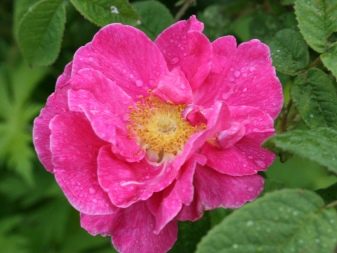
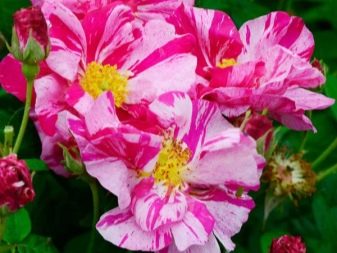
- "French chic". A variety of pink flower with a pleasant pale pink shade of flowers. The average height of the shrub is one and a half meters. There are single flowers and inflorescences from several. This variety does not like excessive moisture, but it is resistant to direct sunlight. Frost-resistant type. The smell is pronounced, with subtle hints of a pear hue.
- "Gardens of France". A branchy floribunda looks spectacular in the garden.The flowers are densely double, they have many wavy petals. Perfectly tolerates bad weather. The color is bright pink with a salmon tint. The bush is wide, branched. The foliage is dark shiny. Disease resistant. The rose is pruned in the area of 1 meter, without pruning it can grow up to two meters.

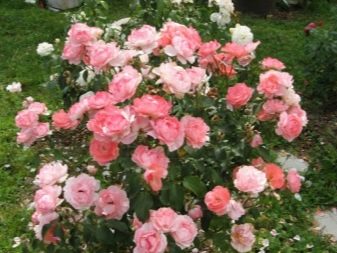
Planting and leaving
The French rose requires compliance with some planting and subsequent care requirements. The flowers of this plant are sensitive to sunlight. The open rays of the sun have a negative effect on the plant - leaves wilting, color fading. A properly selected landing site will avoid the loss of flower culture. Taller plants should grow next to the rose bush that will absorb or scatter ultraviolet light. At the same time, they should not create a thick shadow cast on the roses.
You can achieve the cover effect by analyzing the trajectory of the movement of the celestial body. Plant the bush in the place where there will be the greatest shadow during the period of the highest percentage of illumination, namely: rose bushes should be covered with the shade of other plants during the midday peak. At other times of the day - morning and evening, oblique sun rays will not harm French beauty.
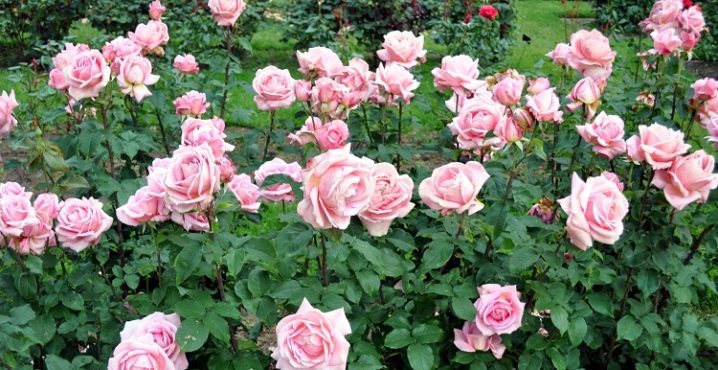
The root system of French roses needs oxygen. To ensure its delivery, it is necessary to regularly loosen the soil around the bush. Moisture is a life-supporting resource. Rose flowers have a bright color scheme and a pronounced aroma thanks to the water. Its norm provides the best manifestation of the listed properties. Watering should be carried out regularly, avoiding drying out or silting of the soil.
When transplanting cuttings or whole bushes, fertilizer is required. In its capacity, you can use specialized substances supplied to flower shops, saltpeter, manure and other biological degradation products. The feeding period should coincide with planting or the beginning of sap flow. In the second case, the intensity of flowering may depend on the degree of feeding. Fertilizer helps the plant to get out of winter "hibernation" with less energy consumption. The saved energy will be used for the formation of more buds and their quality.



The time for planting the shrub is autumn or early spring. In the first case, you need to have time to plant a rose before the onset of frost. In the second - after setting the temperature mark above +15 degrees. In the first year of planting, flowering is extremely rare.
To improve the flowering factor of a rose, it is worth breaking off the faded flower bases, but not cutting them off. The flower yield will be good if the root system of the shrub is protected before the cold weather. Place an earthen mound in the area where the trunk goes into the ground. Cover it with sawdust, straw, hay. In some regions, where frosts are severe, it is recommended to stop the stems and cover them with a film.
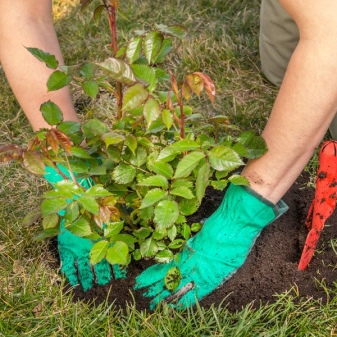

The French rose needs constant care. It is necessary to remove old buds, dry and damaged leaves and other waste elements. With this approach, abundant flowering and growth is expected. "Cleaning" the bush is done in late autumn or early spring. At other times of the year, it can harm the plant.
In the next video, you will find more information about French roses.

































































































The comment was sent successfully.